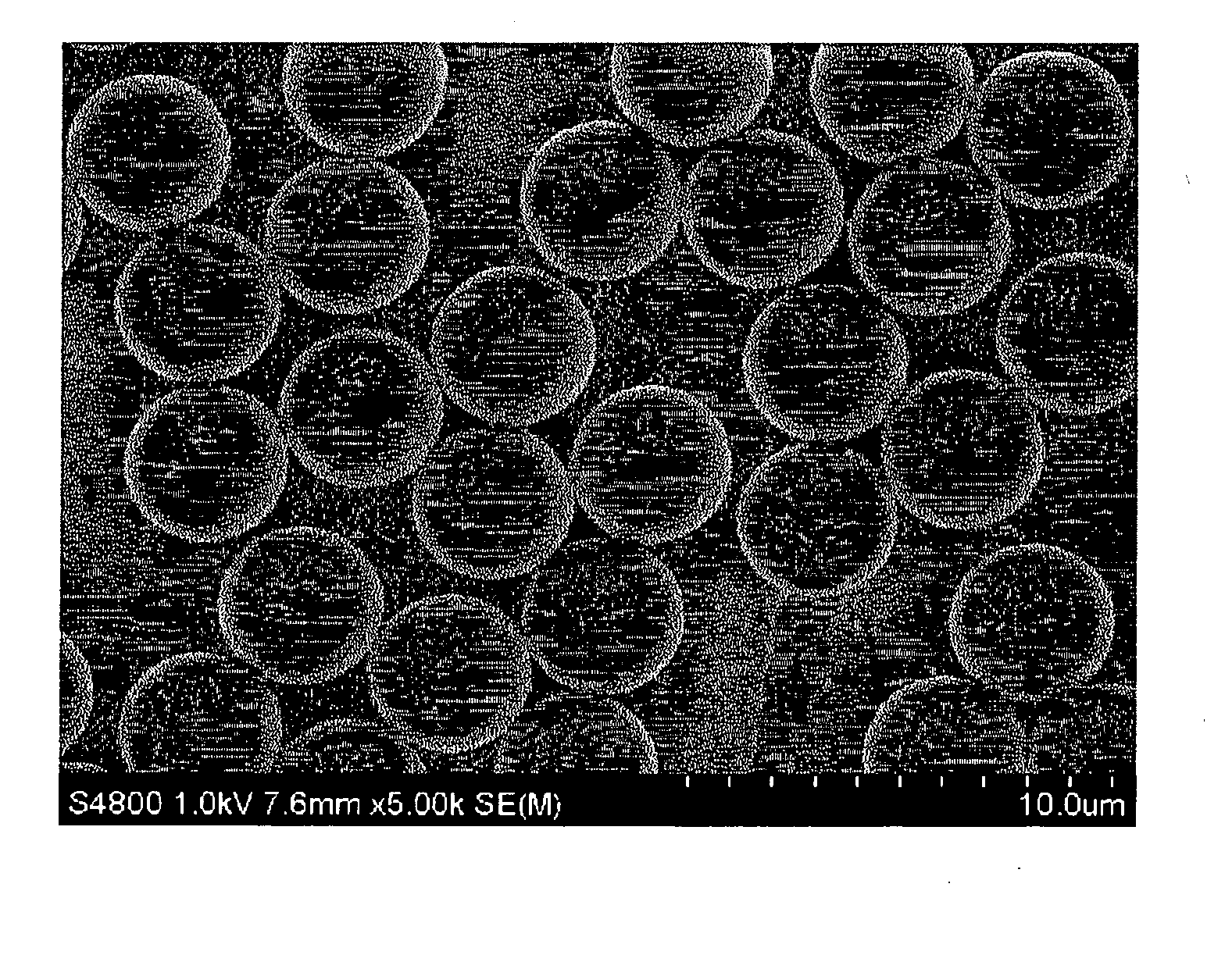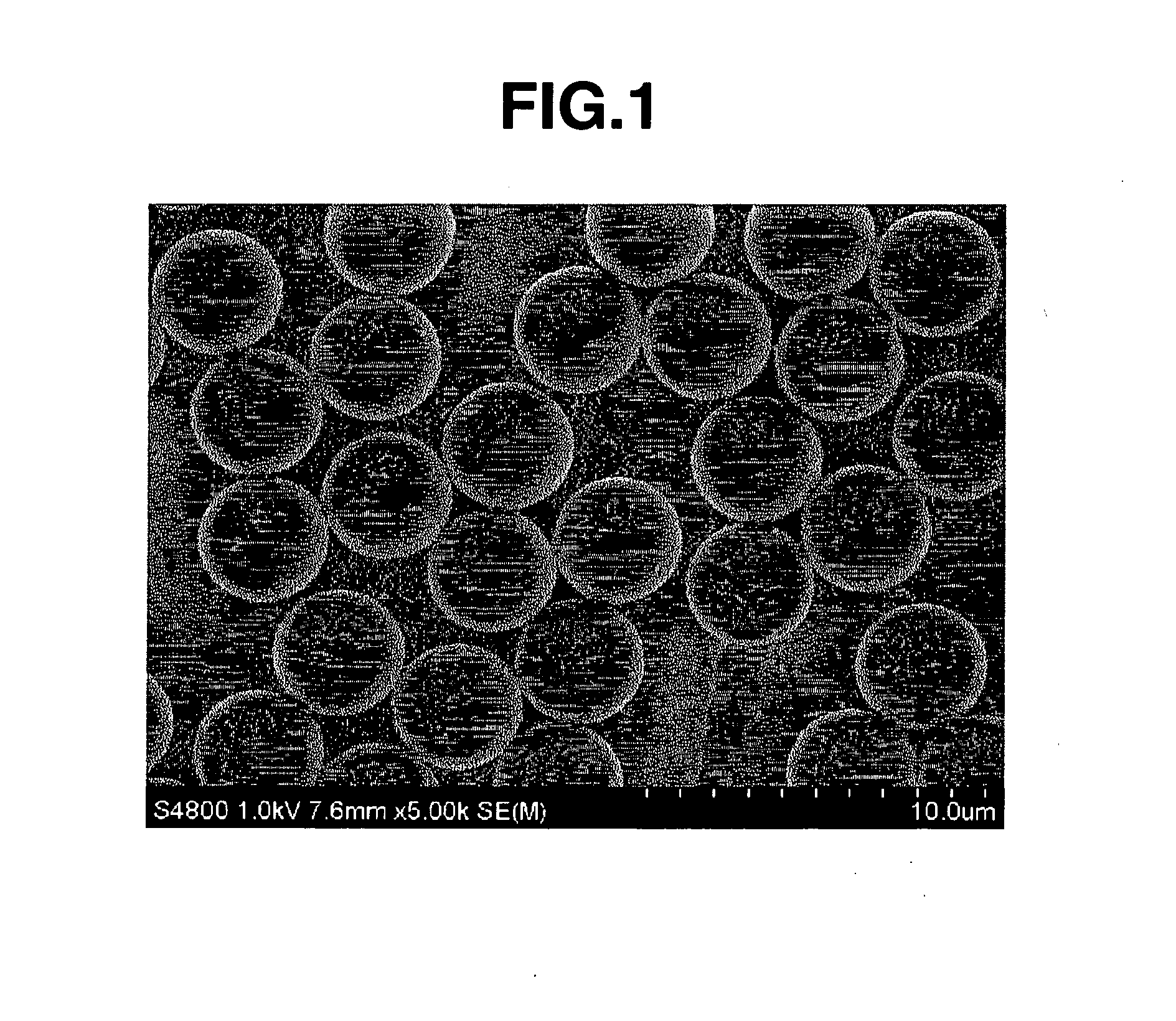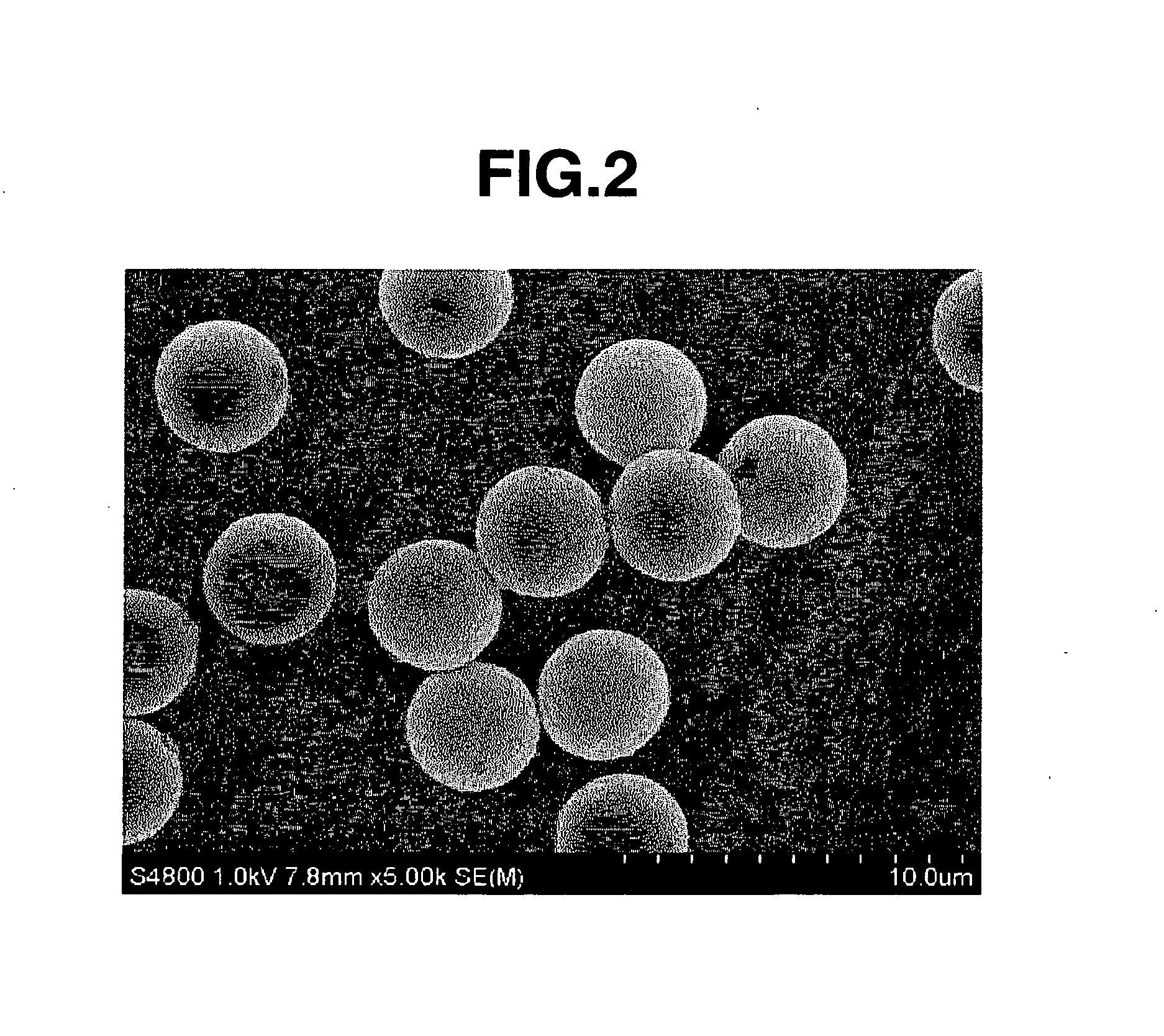Conductive particles and method of preparing the same
a technology of conductive particles and conductive layers, applied in the field of conductive particles, can solve the problems of low deformation recovery factor of 10%, contact failure, poor deformation recovery performance of conductive microspheres using synthetic resin particles as base microspheres, etc., and achieve excellent connection reliability and connection resistance properties.
- Summary
- Abstract
- Description
- Claims
- Application Information
AI Technical Summary
Benefits of technology
Problems solved by technology
Method used
Image
Examples
synthesis example 1
[0242] A 5-L separable flask was charged collectively with the compounds set forth in the following Group A1. After replacement of dissolved oxygen with nitrogen, heating and stirring were conducted for about 6 hours by using a stirrer under a stream of nitrogen at an oil bath temperature of 82° C., to obtain a solution of DVB-methacrylic acid-diacrylate copolymer particles.
[0243] The particle-containing solution thus obtained was subjected about 3 to 5 times to washing with tetrahydrofuran (hereinafter referred to as THF) and filtration by use of a known suction filtration equipment, followed by vacuum drying, to obtain Core Particles 1. The particle diameter of the particles thus obtained was observed and measured under an SEM. The particles were spherical particles with a mean particle diameter of 3.78 μm. In addition, the Cv value was 3.7%.
[Group A1]DVB55.75g(purity 96%; DVB-960, produced by Nippon SteelChemical Co., Ltd.)[containing 3% of ethylvinylbenzene]Methacrylic acid37...
synthesis example 2
[0246] In the same manner as in Synthesis Example 1 except that the compounds set forth in the following Group A2 were used, Core Particles 2 composed of a DVB-methacrylic acid-diacrylate copolymer were obtained.
[0247] The particle diameter of the particles thus obtained was observed and measured under an SEM. The particles were spherical particles with a mean particle diameter of 5.12 μm. Besides, the Cv value was 4.0%.
[Group A2]DVB (DVB-960)61.31gMethacrylic acid40.88gNK-Ester A-DOD102.19gAcetonitrile1858.05gAIBN18.42gn-Dodecane85.51gDiethylene glycol monoethyl ether acetate92.9gDMF31.59g
[0248] Next, in the same manner as in Synthesis Example 1 except that the compounds set forth in the following Group B2 were used, a coat layer (polymer coat layer) of a styrene-methyl methacrylate copolymer was formed on the surface of each of Core Particles 2, to obtain Polymer Base Particles 2.
[0249] The particle diameter of the particles thus obtained was observed and measured under an SEM...
synthesis example 3
[0250] In the same manner as in Synthesis Example 1 except that the compounds set forth in the following Group A3 were used, Core Particles 3 composed of a DVB-methacrylic acid-dimethacrylate copolymer were obtained.
[0251] The particle diameter of the particles thus obtained was observed and measured under an SEM. The particles were spherical particles with a mean particle diameter of 4.20 μm. Besides, the Cv value was 3.8%.
[Group A3]DVB (DVB-960)51.45gMethacrylic acid51.45gNK-Ester DOD-N68.6g(produced by Shin-Nakamura Chemical Co., Ltd.)[1,10-decanediol dimethacrylate]Acetonitrile1715gAIBN14.7gn-Dodecane78.4gDiethylene glycol monoethyl ether acetate85.75g
[0252] Next, in the same manner as in Synthesis Example 1 except that the compounds set forth in the following Group B3 were used, a polystyrene coat layer (polymer coat layer) was formed on the surface of each of Core Particles 3, to obtain Polymer Base Particles 3.
[0253] The particle diameter of the particles thus obtained wa...
PUM
| Property | Measurement | Unit |
|---|---|---|
| Temperature | aaaaa | aaaaa |
| Fraction | aaaaa | aaaaa |
| Fraction | aaaaa | aaaaa |
Abstract
Description
Claims
Application Information
 Login to View More
Login to View More - R&D
- Intellectual Property
- Life Sciences
- Materials
- Tech Scout
- Unparalleled Data Quality
- Higher Quality Content
- 60% Fewer Hallucinations
Browse by: Latest US Patents, China's latest patents, Technical Efficacy Thesaurus, Application Domain, Technology Topic, Popular Technical Reports.
© 2025 PatSnap. All rights reserved.Legal|Privacy policy|Modern Slavery Act Transparency Statement|Sitemap|About US| Contact US: help@patsnap.com



